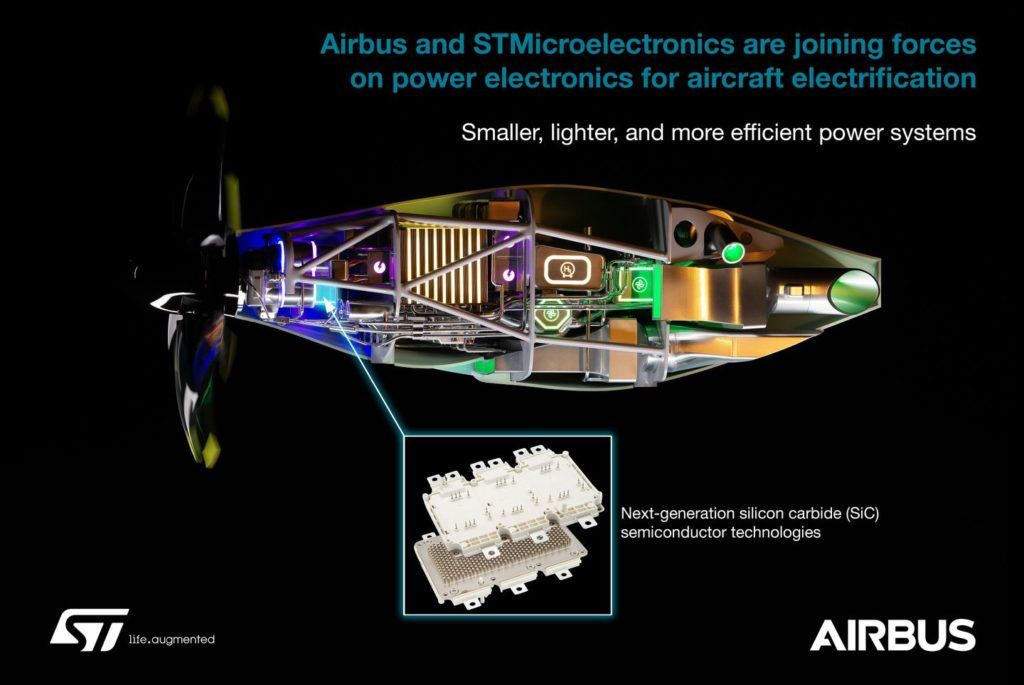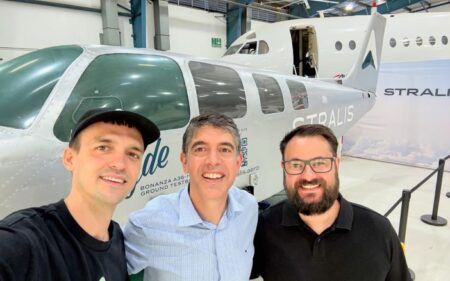Airbus and European semiconductor company STMicroelectronics are to partner on the R&D of power electronics that could boost the performance or reduce the size of electric powertrains in future aircraft by up to 20%.
Airbus and other aircraft OEMs are developing hybrid-electric and all-electric aircraft in a bid to decarbonize and reduce the sector’s environmental impact. However, the limitations of current battery and other electrical machines place design and performance constraints on the engineers developing these aircraft.
Wide bandgap semiconductor materials such as Silicon Carbide (SiC) and Gallium Nitride (GaN) have superior electrical properties compared with silicon used in many electrical devices. SiC and GaN enable the development of smaller, lighter and more efficient high-performance electronic devices and systems, such as power switches in onboard chargers and inverters. They are particularly useful in applications that require high power, high frequency, or high-temperature operations.
SiC semiconductors are becoming key in the automotive sector as car manufacturers seek to increase the performance of electric vehicles (EVs). The R&D partnership between Airbus and STMicroelectronics will seek to leverage the materials in the same way.
Airbus and STMicroelectronics’ partnership will focus on developing SiC and GaN devices, packages, and modules adapted for Airbus aircraft. The companies will assess these components by testing e-motor control units, high and low-voltage power converters, and wireless power transfer systems.
Speaking at the Paris Air Show this week, Riccardo Nicoloso, general manager of new materials and power solutions division at STMicroelectronics said, “For example, you need a traction inverter to control a motor, and an inverter is made up of switches. The higher the power – the higher the losses because of the switches. It’s the same case if you have a battery that is charging and discharging the battery – you need switches.
“Just by replacing IGBT [Insulated-gate bipolar transistor] technology with silicon carbide technology some carmakers have been able to save around 20% in terms of dimension of the battery, or increased by 20% the mileage of the EV.
“In an aircraft, this could be a major performance and efficiency boost that can reduce the size and weight of everything between the battery and motor, crucial design aspects in aviation.”
Sabine Klauke, Airbus’ chief technical officer said, “This collaboration will be key to support Airbus’ electrification roadmap. Leveraging their expertise and experience in power electronics for automotive and industrial applications with our own record in aircraft and VTOL electrification will help us accelerate the development of the disruptive technologies required for the ZEROe roadmap and CityAirbus NextGen.”






